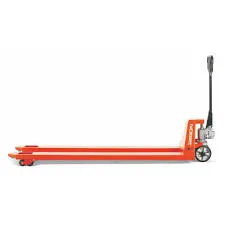


Safety Equipment for Working at Heights
Working at heights presents significant risks that can lead to severe injuries or fatalities. To mitigate these dangers, employing appropriate safety equipment is paramount. This article discusses the various types of safety equipment essential for working at heights, their uses, and the importance of adhering to safety regulations.
Understanding the Risks
Before delving into the safety equipment, it is crucial to understand the risks associated with working at elevated levels. Falls from heights are one of the leading causes of workplace injuries and fatalities. Factors such as the type of work being performed, environmental conditions, and the worker’s level of training can all influence the likelihood of an accident. Therefore, appropriate safety measures and equipment are essential to protect workers and ensure a safe working environment.
Types of Safety Equipment
1. Personal Fall Arrest Systems (PFAS) PFAS is a crucial element of safety equipment for those working at heights. This system typically includes a harness, lanyards, and an anchor point. The harness is worn by the worker, allowing them to secure themselves to a stable anchor point. In the event of a fall, the lanyard will catch the worker, significantly reducing the risk of severe injury. It is imperative that the components of PFAS are regularly inspected for wear and tear to ensure they function correctly when needed.
2. Guardrails and Safety Nets Guardrails are permanent structures designed to prevent workers from falling off edges or platforms. They are often used in scaffolding and on rooftops. Safety nets serve a similar purpose, catching individuals who fall and preventing them from hitting the ground. Both guardrails and safety nets provide essential safety measures when working at heights, ensuring that there is a physical barrier to prevent falls.

3. Ladders and Scaffolding The use of ladders and scaffolding is widespread in height-related work. Ladders must be of the correct height for the job and should be made of materials that can withstand the conditions of the worksite. Scaffolding must be erected and maintained according to safety standards, and workers should be trained in proper use to prevent collapses and accidents.
4. Hard Hats and Safety Shoes While these may seem basic, hard hats and safety shoes are crucial for workers at heights. Hard hats protect against falling objects, while safety shoes provide traction and protect against slips, trips, and falls. Both items play a vital role in ensuring a worker’s safety while performing tasks at elevated levels.
5. Visibility Gear In many work environments, especially outdoor construction sites, visibility gear such as vests and helmets can help ensure that workers are seen by others, reducing the risk of accidents caused by moving machinery or vehicles. High-visibility clothing is particularly important in low-light conditions or where there is heavy equipment in use.
Training and Compliance
The effectiveness of safety equipment is enhanced through proper training and adherence to safety regulations. Employers must provide comprehensive training programs that cover the correct use of safety equipment, awareness of potential hazards, and emergency procedures in the event of a fall. Regular safety drills and refresher courses can help maintain a culture of safety within the workplace.
Conclusion
Safety equipment is an essential aspect of working at heights, and its proper use can save lives. By utilizing personal fall arrest systems, guardrails, safety nets, ladders, scaffolding, hard hats, safety shoes, and visibility gear, workers can significantly reduce their risk of injury. Equally important is the commitment to training and compliance with safety regulations, which fosters a safe working environment. Employers must prioritize safety, investing in the necessary equipment and training to protect their workforce. Ultimately, a proactive approach to safety not only protects workers but also contributes to operational efficiency and morale within the workplace. Remember, safety shouldn’t be an afterthought; it should be the foundation of any job involving work at heights.



